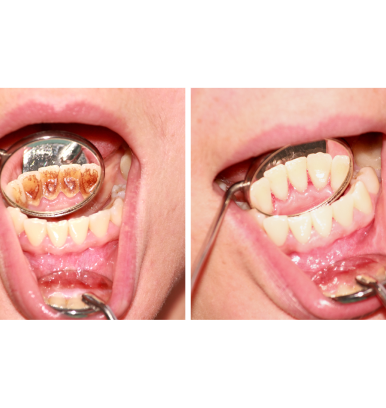Oral Pathology
Oral pathology is any disease, abnormality or injury to the oral cavity, which includes the teeth, gums, lips, mucosa, perioral skin, tongue, salivary glands, jaws or facial muscles/joints. In other words, it is any issue with the mouth, head or neck.
What Do Oral Pathologists Do?
An oral pathologist is a dental professional who specializes in diagnosing and treating disorders that affect the mouth. As the mouth is a complex organ with many important functions, oral pathologists are trained to deal with a host of disorders. By catching developing oral problems early, oral pathologists make treatment as simple and effective as possible and prevent oral diseases from impacting other areas of the body.

What Are the Signs of Oral Pathology?
There are general signs you can look for on your own that may indicate an oral pathological condition exists, such as mouth sores or changes in coloration. However, identifying the exact problem may require a visit to an oral pathologist, who may even need to take a biopsy sample.
Signs of oral pathology to look for during a self-examination include the following:
-
Any changes to the color or appearance of the lips, cheeks, palate, tongue, periodontal tissue, face, or neck.
-
The inside of a healthy mouth will have a smooth, pink mucosa lining, without any red or white patches or lumps.
-
Open sores or lesions that do not heal and/or bleed on occasion
-
There are a few signs that can indicate you have periodontal disease, which is a serious gum infection. These signs include inflamed gums that are sore or bleeding, as well as receding gum lines. Gingivitis is the mildest form of periodontal disease, but if left untreated, it can develop into a more serious infection called periodontitis. This can eventually lead to tooth loss and severe infections.
-
If you have a sore throat that does not go away, hoarse speech, or difficulty chewing and swallowing, you may have a chronic problem.
To check for signs of oral pathology, stand in front of a well-lit mirror and check your mouth from various angles. Pull back your lips/cheeks and feel the inside of your mouth with your fingers. The worst oral pathology diseases are lesions and mouth cancer, but even these can be treated if caught in the early stages. Periodontal disease and benign tumors are far more common, and a good oral pathologist can treat these diseases with relative ease.
References
1. Neville, B. W., Damm, D. D., Allen, C. M., & Chi, A. C. (2015). Oral and maxillofacial pathology. Elsevier Health Sciences.
2. Regezi, J. A., Sciubba, J. J., & Jordan, R. C. (2012). Oral pathology: clinical pathologic correlations. Elsevier Health Sciences.
3. Waldron, C. A., & Shafer, W. G. (2018). The histopathology of oral diseases. In Shafer's Textbook of Oral Pathology (pp. 1-36). Elsevier Health Sciences.
4. Slootweg, P. J. (2018). Lesions of the oral cavity and oropharynx. In Surgical Pathology of the Head and Neck (pp. 35-91). Springer.
5. Mupparapu, M. (2017). Oral and maxillofacial pathology. Jaypee Brothers Medical Publishers.
6. Thompson, L. D., & Wenig, B. M. (2017). Diagnostic pathology: head and neck. Elsevier Health Sciences.
7. Speight, P. M., & Takata, T. (2018). New developments in oral cancer. Current Opinion in Oncology, 30(3), 152-156.
8. Mehrotra, R., & Gupta, A. (2018). Challenges to early detection and treatment of oral cancer. Journal of Cancer Research and Therapeutics, 14(5), 963-967.
9. Chiesa, F., Boracchi, P., Tradati, N., & Alessandro, P. D. (2018). Head and neck cancer: present and future. Expert Review of Anticancer Therapy, 18(12), 1217-1232.
10. El-Naggar, A. K., Chan, J. K., Grandis, J. R., Takata, T., & Slootweg, P. J. (2017). WHO Classification of Head and Neck Tumours (4th ed.). IARC.